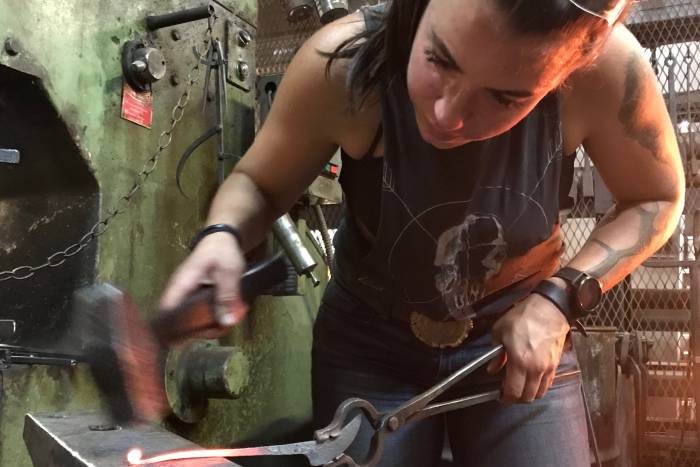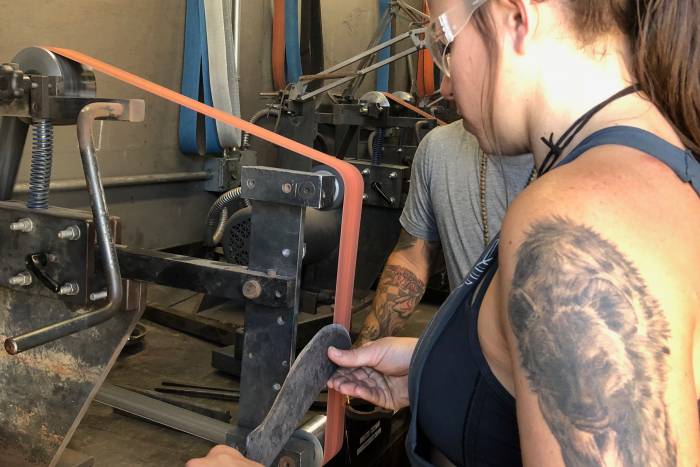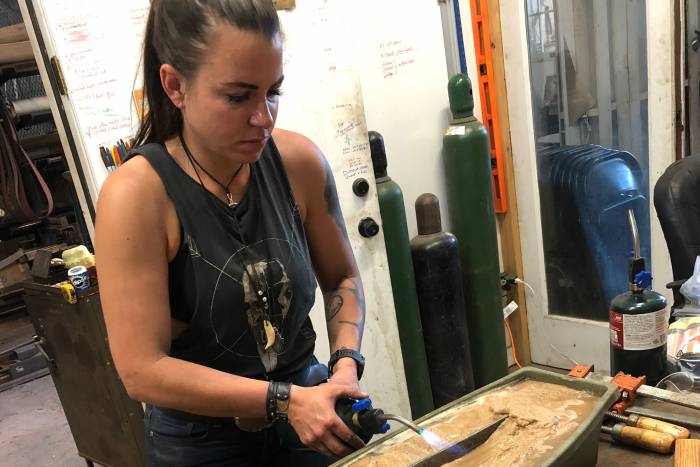Primitive survival expert Laura Zerra got her 82 days of fame on the reality TV show “Naked and Afraid.” Now she’s releasing a book about how to make a knife in real life.
On the show, Zerra survived nearly three months in the wilderness relying on a knife as her sole survival tool. Traveling the world for the last 15 years, she’s also practiced her self-reliance craft in all kinds of ecosystems.
Knowing how a good blade should work in the field, Zerra has committed to mastering knifemaking. Now she’s sharing her craft knowledge in “A Modern Guide to Knifemaking” (Quarry Books, July 3, 2018, $24.99).
“I wanted to be able to break down the entire process in the simplest of terms, assuming no prior knowledge, and have the reader be able to follow the instructions and make a knife from start to finish,” Zerra said.
“As a primitive survivalist, the one tool I hate to be without is a knife. While you can make stone tools, you have to use them differently. Nothing can replace a good steel blade.”
Tips and Tricks From a Modern Knifemaking Guide
The book contains step-by-step instructions, from the right steel for a handle to the nuances of blade design and sharpening. Zerra shared a few favorite tips and tricks from the soon-to-be-released title.
1. Handle your fair share
“Knives are really personal. You have to learn what works for you so you can make a knife that is suited for your own needs,” Zerra said.
“Use and handle as many knives as possible to figure what works and what you’d like to improve upon. Understand what aspects you like and figure out how to troubleshoot around the aspects you don’t to make a design that is truly custom.”
2. Set up shop wherever you are
“Improvise with whatever you have. People have an idea that they need a really big space or whole garage, but that’s not true. I’ve been traveling without a permanent home for almost 15 years, and I’ve still managed to set up makeshift shops in numerous places,” she said.
“In the book, I break the process of setting up a shop into simple terms and give substitution options so there are no excuses to prevent people from getting started.”
3. Drill down on sharpening
“One of the most misunderstood processes in knifemaking and upkeep is sharpening. You can have the best knife in the world, but if the edge is dull, the knife is not only useless but dangerous,” Zerra said.
“Sharpening can take a lot of patience and practice. You have to hold a very exact angle to take the metal off in just the right spot to make your edge sharp. By marking the edge of the knife with a permanent marker, you can see where you’re removing metal and take the guesswork out of it, speeding up the learning curve of this important skill.”
Learn more in “A Modern Guide to Knifemaking”, available on Amazon now.









